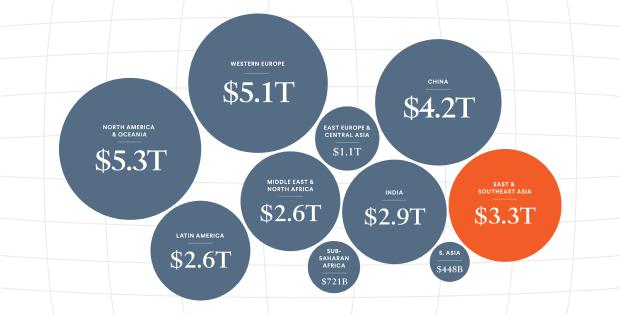Legal Barriers
1
Accessing Institutions
Limitations on women’s legal capacity weaken their decision-making ability. When women cannot independently decide where they want to go on a daily basis, travel, or live, they may face difficulty getting to work or conducting business transactions.
2
Building Credit
When women face constraints, including discrimination and limited credit history, in accessing credit, their ability to open formal bank accounts, build reputation collateral for loans, find employment, and start and grow businesses is impeded.
3
Getting a Job
Legal barriers that affect a woman’s ability to work, including gender-based job restrictions and the lack of workplace protections and leave benefits, inhibit her job prospects, earning potential, career growth, and ability to balance work and family.
4
Going to Court
Barriers in the justice system prevent women from advocating for their interests and enforcing the law. The cost of litigation can discourage poor women from accessing justice, and unequal treatment in court can undermine women’s legal capacities.
5
Protecting Women From Violence
Women can function more freely in societies and the business world when not faced with the threat of violence. Violence against women can undermine women’s careers, ability to work, access to financial resources, and the employment climate.
6
Providing Incentives to Work
Support for mothers—such as tax credits and the availability of childcare for young children—can reduce unequal burdens and provide incentives for women to enter and remain in the workforce, thereby increasing women’s labor force participation.
7
Using Property
Access to property benefits women entrepreneurs by increasing their financial security and providing them with the necessary collateral to start businesses. Legal differences in property ownership and inheritance rights can limit women’s economic prospects.
Moving Toward Reform
Governments around the world are beginning to understand the cost of inequality for women in the workplace, and to take action. Between 2015 and 2017, over 110 countries and territories carried out more than 180 reforms that improved women’s economic opportunities. Governments should also do more to implement existing laws and policies that provide for women’s equality.
110+
Countries
180+
Positive Reforms

Understanding the Economic Stakes
Closing the gender gap in the workforce could add a staggering $28 trillion to the global gross domestic product (GDP). Find out how women’s economic participation reduces poverty and boosts growth.
See the interactive reportProviding Incentives to Work
By the Numbers
156 countries do not make childcare payments tax-deductible.
75 countries do not guarantee mothers an equivalent position after maternity leave.
54 countries do not provide government-run childcare services.
18 countries do not make primary education free and compulsory.
Economic Effects
Among Organization for Economic Cooperation and Development (OECD) countries, the availability of public childcare for children below the age of five is strongly correlated with employment rates of mothers with young children.
Source: OECD

Country Example
When Kazuyo Sejima, a renowned Japanese architect, began her career in the 1970s, she opted not to have children. At the time, Sejima could not imagine being able to have both a family and a fulfilling career, and she chose her career. In 2011, only 38 percent of Japanese women continued working after having a child, but by 2017 that number had climbed to just over 50 percent. In the intervening years, Japan reformed its laws and policies to provide women greater incentives to work, with the goal of boosting Japan’s economic growth.
Source: Economist
Policy Reform
By providing childcare benefits and parental leave policies, national governments can incentivize women to work and address the disproportionate burden of unpaid care that women shoulder. Countries should:
Provide or subsidize childcare services.
Eliminate tax deductions and/or tax credits that apply only to men.
Guarantee an equivalent position to employees returning from maternity leave.
Make primary education free and compulsory.
Thirteen countries and territories changed laws to incentivize women’s work between 2015 and 2017.
No reforms were undertaken between 2015-2017 related to women’s workplace equality.
Increased gender parity
Neutral to gender parity
Decreased gender parity